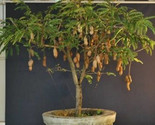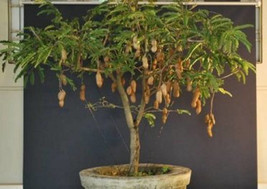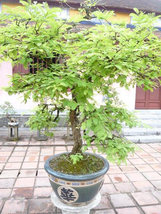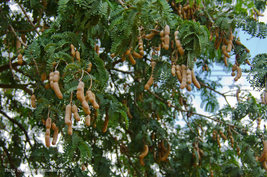Rendered at 22:03:29 11/21/25
Sign up and get $15.00 bCredits free to use at checkout and another $5.00 bCredits when you make your first purchase. More info
Thai sweet Tamarind seeds, grow in a pot,as a bush or tree, TAMARINDUS INDICA, 1
€2,56 EUR
(It may be possible to pay only $2.45 instead of $2.95 when you
use your bCredits at checkout)
Sign up and get $15.00 bCredits free to use at checkout and another $5.00 bCredits when you make your first purchase. More info
Los buques de
Thailand

Share & earn! Sign in, share this or any listing, and you’ll get commission when it sells.
Learn more
Las opciones de envío
La política de devoluciones
Full refund available within 90 days
Protección de compra
Opciones de pago
PayPal accepted
PayPal Credit accepted
Venmo accepted
PayPal, MasterCard, Visa, Discover, and American Express accepted
Maestro accepted
Amazon Pay accepted
Nuvei accepted
Las opciones de envío
La política de devoluciones
Full refund available within 90 days
Protección de compra
Opciones de pago
PayPal accepted
PayPal Credit accepted
Venmo accepted
PayPal, MasterCard, Visa, Discover, and American Express accepted
Maestro accepted
Amazon Pay accepted
Nuvei accepted
Rasgos del artículo
| Categoría: | |
|---|---|
| cantidad disponible: |
35 En stock |
| Condition: |
Unspecified by seller, may be new. |
Detalles del anuncio
| Las políticas del vendedor: | |
|---|---|
| Envío de descuento: |
Elementos enviados después de la primera en el apartamento de $0.00 |
| Publicado en venta: |
Más de una semana |
| Artículo número: |
708436799 |
Descripción del Artículo
Buy 5 or more items and receive a 25% discount
use coupon code: 25PERCENTOFF
The tamarind is a long-lived, medium-growth bushy tree which can attain a maximum crown height of 12 to 18 metres. It may also be grown in a pot, reducing significantly its height.
The crown has irregular vase-shaped outline of dense foliage.Leaves are evergreen, bright green in colour, The branches droop from a single, central trunk as the tree matures and is often pruned in human agriculture to optimize tree density and ease of fruit harvest. At night, the leaflets close up.
The tamarind does flower, though inconspicuously, with red and yellow elongated flowers. Flowers are 2.5 cm wide with five petals borne in small racemes, yellow with orange or red streaks. Buds are pink due as the 4 sepals are pink and are lost when the flower blooms.
The tree grows well in full sun in clay, loam, sandy and acidic soil types, with a high drought and aerosol salt resistance.
The fruit of the tamarind is most commonly reserved for consumption, whether raw or cooked or prepared in some other manner, according to the regional and cultural palate.
The fruit itself is an elongated-rod, 12 to 15 cm in length, and covered in a hard, brown exterior. The fleshy, juicy, acidulous pulp of the fruit is mature when coloured brown or reddish-brown.
The fruit is considered ripe when the pods are easily pried open with fingers.
Tamarind is one of the staple ingredients used in Thai Cuisine, alongside chili, lemongrass and Lime.
The fruit is widely distributed in a Tamarind Paste, which is used in numerous Thai curries. The Tawith or without seeds and then packed and sold as a paste on markets and supermarkets.
Many curries in Thailand use its paste.
There are even Marmalade recipes which use it.
To add more taste to a Thai curry using tamarind paste, pour 3 or 4 teaspoons of water over the tamarind paste, squeeze the paste to extract the flavor and then pour into the curry.
Germinating: Steep the seed in tepid water for a few hours before sowing. Sow in a shallow pot containing a mixture of seed compost and grit, just cover the seeds and keep warm, preferably with bottom heat, at 20C for at least 3 weeks. When shoots emerge, keep damp, in a warm light place but not in direct sunlight.
For a cooler climate it will live in a pot for several years and is easy to grow as a houseplant.
This variety of Thai tamarind are well known for their sweetness over other varieties
Added to your wish list!

- Thai sweet Tamarind seeds, grow in a pot,as a bush or tree, TAMARINDUS INDICA, 1
- 35 in stock
- Handling time 2 day.
- Returns/refunds accepted
Get an item reminder
We'll email you a link to your item now and follow up with a single reminder (if you'd like one). That's it! No spam, no hassle.
Already have an account?
Log in and add this item to your wish list.






